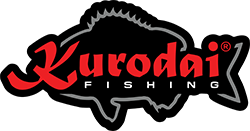
Picture Above: Myself and "Din Pomen" on Monstrous Barracuda caught using Slow Pitch Jigging Technique and 130g Kurodai's Flutter Ironman offshore Port Klang Malaysia
"Jigging and the origin of Slow Pitch Jigging"
The fundamental of jigging is to attract predatory fish, similarly, applied on lures or using live bait during fishing. It has been an infamous story about a person named after Nirohiro Sato – a Japanese avid angler who discovered and popularized a jigging technique called “Slow-Pitch Jigging”.
It was told that during the jigging time, the sea was choppy hence rocking the boat heavily. The rod was left on the boat-side while the jig was still at the seabed, upon returning Mr. Sato found out there was a fish at the end of the line.
"...The rod was left on the boat-side while the jig was still at the seabed, upon returning Mr. Sato found out there was a fish at the end of the line..."
The boat's rocking motion somehow generates a slow and gentle up and down action on the rod thus animating the jig movement down below. Post to this discovery, an idea emerged on this new technique of jigging by using a special profile (shape) which is usually made with one heavier side and one flat side. Such asymmetrical shape exerts larger actions despite minimal effort placed on the rod actions. Unlike its predecessor (speed jigging) where more efforts are required on the rods, combined with high-speed reeling in of the line. Both technics goals are eventually to entice large predatory fish to bite the jig either upwards or falling.
"...asymmetrical shape exerts larger actions despite minimal effort placed on the rod actions..."

Picture Above: Kurodai Submariner 250g Goldwing - the asymmetrical shape of Slow Pitch Jigging Lures
In summary, both technics are effective depending on the situation and the target fish that we are aiming for. We do observe preferences of fishes on the type of jigging style that we are putting on such as demersal fish tend to bite on slow pitch jigging whilst pelagic species are keener to attack jig that is moving at much higher speed.

Picture Above: Kurodai Knife Pilchard 100g - A typical speed jig / fast jig lures used to hunt most pelagic species. The symmetrical shape allow darting and fast jerking motion
Cheers!
Fhirdaus Amran
Founder of Kurodai Fishing

